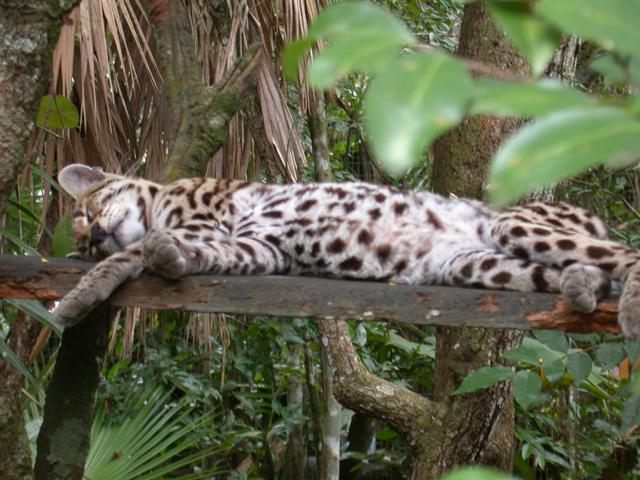
Animal Diversity Web
Page 2.
Nutrition:
Ocelots have a wide variety of food habits. They are carnivore terrestrial
hunters and are nocturnal. They have excellent night vision and spend a
lot of their time in the trees watching their prey then move to the ground to
hunt. They are very sneaky walkers and easily sneak up on their pray.
Along with many of the cats throughout the world they wait to pounce on their
pray then kill it with a bite to the neck. The majority of their diet are
rodents but they also do prey upon many mammals and birds. Their prey are
usually small to medium
sized animals. Ocelots also eat amphibians, fish, and reptiles. Some
of the known prey of these cats include rabbits, squirrel monkeys, iguanas, tree
lizards, frogs, small turtles, deer, and even lesser anteaters. Ocelots
also take advantage of the abundance of fish and land crabs during the seasonal
changes of the wet season.
Reproduction:
Ocelots can most likely be called polygynous. Which means that males have
large territories that overlap territories of several females. Females
mature around 18 months and can mate until around 13 years of age. Males
mature around 30 months and can mate up until the age of 15. The gestation
period is in between 79 to 85 days. After this period usually 1-2 young
are produced. Their approximate weight is 8.5 ounces. They have a
very small litter size and the infant mortality rate is very high, which
makes keeping this gorgeous creature alive even harder.
Endangered:
According to Big Cat Rescue and the International Species Information Service
there are only 217 ocelots worldwide and 108 are in the United States.
Along with the small litter size and high mortality rates among the young a lot
of the land which ocelots inhabit are being destroyed from deforestation and
habitat destruction. Ocelots are protected by the Lacey Act, which states
that any transport, import, export, selling, buying, receiving or acquiring of
this animal is illegal. The ocelot is also protected in the United States
by the Recovery Plan for the limited cats of Arizona and Texas. The goal
of this plan is to maintain the ocelot populations.